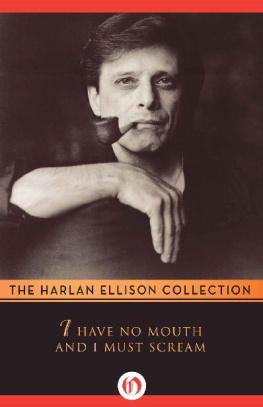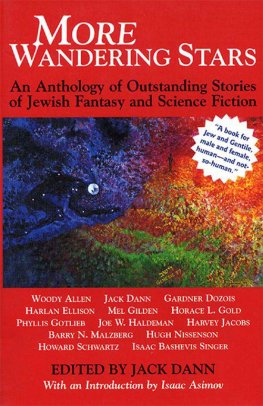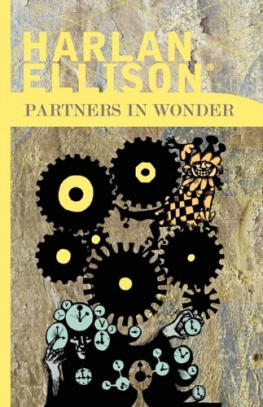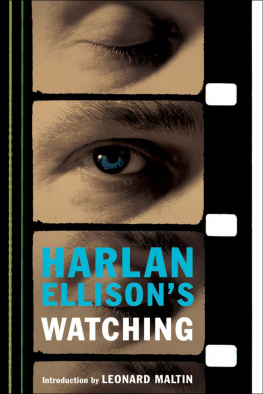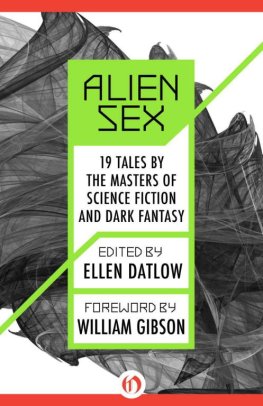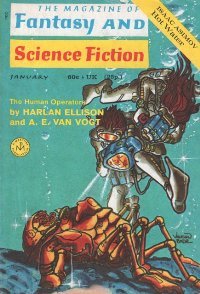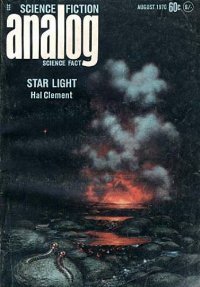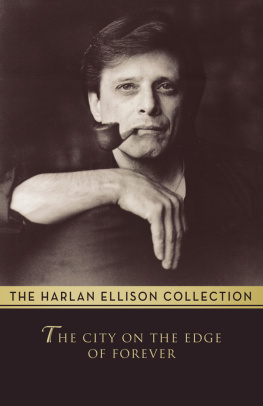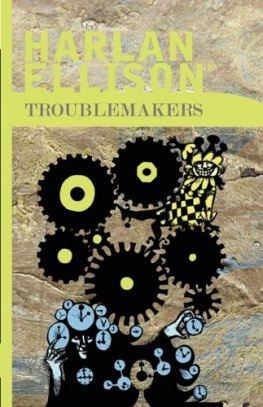Virtually every line of this collection of stories has been revised for this new publication. What I consider to be at least four of my best stories are included in this volume. Those four needed very little attention, a comma here, a semicolon there. The introduction and the foreword have not been altered. Ted Sturgeons dear words were very important to me in 1967 when they were shining new and this collection became the instrument that propelled my work and my career forward. To alter those words, or to solicit a new introduction by someone else, would be to diminish the gift that Ted conferred on me. This book has been in print constantly for sixteen years. And I take no small pleasure and pride in its contents. Only this need be said: I have learned the difference between lie and lay, Ted.
I lay the success of these stories in part at the feet of Sturgeon; and that aint no lie, kiddo.
Introduction
The Mover, The Shaker
My report on Harlan Ellisons Paingod in National Review evoked the following, from a rightwing gentleman in Pennsylvania:
Harlan Ellison, contrary to the otherwise astute Theodore Sturgeon, is no more a major prose stylist than the editorial writer of the Plumbers Journal or The New York Times. Instead, he stands unchallenged as the godawfullest writer ever to become submerged in the vaseline of synonyms and antonyms.
What Mr. Sturgeon mistakes for imagemaking is merely the slick conundrum of an emptyheaded selflover who, unhappily, believes that the bathroom ritual of personal daily resurrection, when inflated rhetorically, is 14 pegged prose. What emerges is not a style but rather a sort of neologistic bawling from the belly. It reminds one of the yips and yaps to be heard in the war councils of imbecilic demonstrators, from Berkley [sic] to Boston.
Ellisons mad, mixed metaphors are only less puerile than those of a certain Pennsylvania Supreme Court Justice, and his unfinished sentences no different in construction than those to be found in the diary of a lady golfer or political speech writer suffering from Liberal emphysema.
If our penitentiaries offered courses in creative writing we would soon be inundated with little Harlan Ellisons [the apostrophe also sic], all of them, to be sure, groovy and all of them ghastly. His unconcealed hostility toward his betters is evident in nearly everything he has ever written. That he is reviewed in a magazine noted for correct English (and often bad French) will probably embarrass the fellow. It does me.
To which I replied:
I find no hesitation in deeping Mr.s embarrassment by demonstrating that he could not possibly have read my review of Paingod and Other Delusions with care, which leads inescapably to the deduction that he has not carefully read Ellison. For the tenor, sum and substance of my report was not that Harlan Ellison is a major prose stylist, but that in three to five years he shall be. Further, I did not in the review concede that Ellison is capable of atrociously bad writingI proclaimed it. I said in effect that this extraordinarily energetic young writer is a man on the move, so watch him. Style, like taste, is resistant to lucid definition; however, both, as living things should be, are subject to constant change. For example, I can clearly recall the time when it was regarded as both stylish and tasteful to capitalize proprietary terms like Vaseline and God (at any degree of awfulness) and hardly tasteful to admit to any expertise on the style of ladies diaries.
You hold in your hands a truly extraordinary book. Taken individually, each of these stories will afford you that easytotake, hardtofind, very hardtoaccomplish quality of entertainment. Here are strange and lovely bits of bitterness like Eyes of Dust and the unforgettable Pretty Maggie Moneyeyes, phantasmagoric fables like I Have No Mouth & I Must Scream and Delusion for a Dragon Slayer.
I have something interesting to tell you about that lastmentioned story. Almost anyone who has been under the influence of a (and Purists please note: I tried) hallucinogen can recognize the psychedelic quality of this story and its images, even to a fine detail like the almost total absence of sound during the shipwreck sequence, and of course the kaleidoscopic changes of persona and symbol. Yet I know for a fact that Harlan has never had this experience, and is one of those who could not be persuaded under any circumstances to undergo it. I got a special insight on this one night at a party when his hostess graciously offered him the opportunity to turn on. No, thanks, he said. Not until I come down.
Which would remain a goodhumored whimsy but for something a biochemist told me a couple of years ago. It seems that there is a blood fraction which is chemically almost identical with the hallucinogen psilocybin. Its manufactured in the body and like most biochemicals, differs in concentration in the bloodstream from person to person, and in the same person from time to time. And, said my biochemist friend, it is quite possible that there are some people who are born, and live out their lives, with a consciousness more aware, more comprehending, morewell, expandedthan those of the rest of us. He cited especially William Blake, whose extraordinary drawings and writings, over quite a long life, seemed consistently to be reporting on a world rather more comprehensive than one we know he lived in.
There are a great many unusual things about Harlan Ellison and his workthe speed, the scope, the variety. Also the ugliness, the cruelty, the compassion, the anger, the hate. All seem larger than lifesizeespecially the compassion which, his work seems to say, he hates as something which would consume him if he let it. This is the explanation of the odd likelihood (I dont think its ever happened, but I think it could) that the beggar who taps you for a dime, and whom I ignore, will get a punch in the mouth from Harlan.
One thing I found fascinating about this particular collectionand its applicable to the others as well, once you find it outis that the earlier stories, like Big Sam, are at first glance more tightly knit, more structured, than the later ones. They have beginnings and middles and endings, and they adhere to their scene and their type, while stories like Maggie Moneyeyes and I Have No Mouth straddle the categories, throw you curves, astonish and amaze. Its an interesting progression, because most beginners start out formless and slowly learn structure. In Harlans case, I think he quickly learned structure because within a predictable structure he was safe, he was contained. When he got big enough, good enoughconfident enoughhe began to write it as it came, let it pour out as his inner needs demanded. It is the confidence of freedom, and the freedom of confidence. He breaks few rules he has not learned first.
(There are exceptions. He is still doing battle with lie and lay, and I am beginning to think that for him strata and phenomena will forever be singular.)

